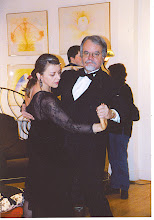Press Release:
Cornell University Library announces partnership with Microsoft that will allow global access to its world-class resources
ITHACA, N.Y. -- Cornell University Library will soon be able to offer more of its exceptional resources to scholars worldwide, thanks to a long-term partnership with Microsoft to digitize a significant number of its books and to put the volumes online using Live Book Search service.
The initiative will focus on works already in the public domain and allow students, researchers, and scholars to use Live Book Search to locate and read books from Cornell University Library's outstanding collections regardless of where they reside in the world. It supports both the library's long-standing commitment to make its collections broadly available and Cornell President David Skorton's goal to increase the impact of the university beyond campus boundaries.
Cornell and Microsoft will be teaming with Kirtas Technologies in Victor, N.Y. to digitize the materials for Live Book Search. Kirtas is a recognized pioneer of revolutionary solutions that enable high-quality, non-destructive bound document digitization at up to 2,400 pages per hour.
"We are happy to be working with Kirtas Technologies on this very important initiative for the university," said Skorton. "They are a very good choice for this endeavor because of the quality of their work and the opportunity to showcase New York State talent."
"This is a best-of-breed partnership," said Lotfi Belkhir, CEO and founder of Kirtas. "We're very proud to contribute our technology and know-how in digitization to this unique and world-changing initiative."
Cornell University Library is playing a key role in book selection and in setting quality standards for the digitized materials. This will ensure that scholarly materials that support Cornell"s academic programs are available in digital form on the Web over time. Some of the subject areas to be digitized include agriculture, American history, English literature, astronomy, food and wine, general engineering, the history of science, home economics, hospitality and travel, human sexuality, labor relations, Native American materials, ornithology, veterinary medicine, and women's studies.
"When surveyed about their needs, the Library's users rate access to full-text online as one of their highest priorities so this partnership will enable us to respond to student and faculty expectations," said Cornell University Librarian Sarah E. Thomas. "We are just beginning to experience the transformative effects of ready access to the cultural record of our civilization.Ý The years ahead will be exciting for us all."
"Our alliance with Cornell University underscores the importance and value of Live Book Search to provide free access to out-of-copyright content to everyone with access to the Internet," said Danielle Tiedt, general manager of the Live Search Selection Team at Microsoft Corp. "Participation by Cornell University in Live Book Search will help us to achieve our goal of transforming Web search into information search through the creation of the world's most trusted index of authoritative content. This will enable customers to have the best possible experience finding answers to their questions, accomplishing their tasks, and discovering new information."
Microsoft will give the Library high-quality digital images of all the materials, allowing the Library to provide worldwide access through its own digital library and to share the content with non-commercial academic initiatives and non-profit organizations.
About Cornell University LibraryOne of the leading academic research libraries in the United States, Cornell University Library is a highly valued partner in teaching, research, and learning at the university, offering cutting edge services and a full spectrum of library resources, from rare books and manuscripts to a rapidly expanding network of digital resources. Through such initiatives as the life sciences portal, the installation of a pioneering high-end mobile and flexible computer laboratory designed specifically for collaborative use, and innovative scholarly publishing support, the Library is an integral component of the many educational programs and research projects under way at Cornell. To learn more about Cornell University Library, visit www.library.cornell.edu.
About MSN and Windows LiveMSN attracts more than 465 million unique users worldwide per month. With localized versions available globally in 42 markets and 21 languages, MSN is a world leader in delivering compelling programmed content experiences to consumers and online advertising opportunities to businesses worldwide. Windows Live, a new set of personal Internet services and software, is designed to bring together in one place all the relationships, information and interests people care about most, with enhanced safety and security features across their PC, devices and the Web. MSN and Windows Live will be offered alongside each other as complementary services. Some Windows Live services entered an early beta phase on Nov. 1, 2005; these and future beta updates can be found at http://ideas.live.com/. Windows Live is available at http://www.live.com/. MSN is located on the Web at http://www.msn.com/. MSN worldwide sites are located at http://www.msn.com/worldwide.ashx.
About Kirtas TechnologiesKirtas Technologies was founded in 2001 with the vision of bringing to the digital realm the massive knowledge sitting on library shelves, government archives and corporate storerooms. Today, the company's revolutionary technology redefines digitization of all bound documents, delivering gentler handling and higher image quality faster, with fewer errors, and at a lower cost than any other solution in the marketplace. For more information, visit www.kirtastech.com.
The names of actual products, services and businesses mentioned herein may be the trademarks and/or service marks of their respective owners.
Contact: Nicola PytellPhone: (607)254-6236Cell: (607)351-3548 nwp2@cornell.eduFOR RELEASE: Oct. 17, 2006-30-











